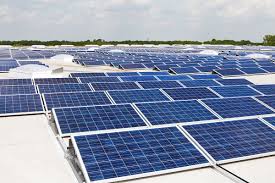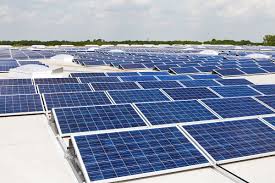
The tariff on import of solar panels as imposed by United States President Donald Trump has resulted in cancellations and freezing of investments in the U.S. renewable energy sector to the tune of over $2.5 billion – primarily in large projects according to reports.
This is more than twice the announced amount of investments of $1 billion in construction or expansion of U.S. solar panel factories who want to take advantage of the import tariffs.
This data clearly indicates the impact such protectionist trade policies can have on one or more industry sectors for every one sector4 that is sought to be protected from foreign competition by such trade barriers. It is also being touted that U.S. manufacturers using steel for production of farm equipment such as tractors and grain bins have also been affected by the Trump tariff on imported steel coupled with the fact that the U.S. farmers are being forced to purchase such equipment at higher prices.
There was no response to the issue form White House officials.
The tariff on solar panels was announced by Trump in January even as a large section of the solar industry opposed the measure claiming that it would slow down one of the fastest growing industry segments in the country.
According to data from the Solar Energy Industries Association, in 2017, solar developers in the U.S. had completed utility-scale installations at a cost of $6.8 billion. the driver for those investments included government incentives to the industry as well as reduced costs of imported parts – primarily from China. This fall in prices made solar installation s competitive in comparison to traditional power generation sources such as natural gas and coal.
About thrice the number of people employed by the U.S. coal industry is employed in the U.S. solar industry at over 250,000 people. According to the U.S. Energy Information Administration, about 40 percent of such people are employed in solar installation projects while about 20 percent are engaged in manufacturing.
“Solar was really on the cusp of being able to completely take off,” said Zoe Hanes, chief executive of Charlotte, North Carolina solar developer Pine Gate Renewables.
Citing impact of the import tariffs, the 2019 and 2020 utility-scale solar installation forecasts in the U.S. was lowered by the GTM Research, a clean energy research firm, by 20 percent and 17 percent, respectively.
There is a divide in the domestic panel production sector in the U.S. over the tariffs. The tariff was opposed by solar giant SunPower Corp despite the fact that the company would be helped by them because it says that the tariffs would inhibit the U.S. installation and development business as wlel as its overseas manufacturing operations.
“There could be substantially more employment without a tariff,” said Chief Executive Tom Werner.
According to the tariff plan, there would be a decrease of 5 percent every in the 30 percent tariffs imposed on so imported solar panels for a period of four years. There would be an initial cost increase of 10 percent in the cost of major installations according to solar developers.
(Source:www.reuters.com)
This is more than twice the announced amount of investments of $1 billion in construction or expansion of U.S. solar panel factories who want to take advantage of the import tariffs.
This data clearly indicates the impact such protectionist trade policies can have on one or more industry sectors for every one sector4 that is sought to be protected from foreign competition by such trade barriers. It is also being touted that U.S. manufacturers using steel for production of farm equipment such as tractors and grain bins have also been affected by the Trump tariff on imported steel coupled with the fact that the U.S. farmers are being forced to purchase such equipment at higher prices.
There was no response to the issue form White House officials.
The tariff on solar panels was announced by Trump in January even as a large section of the solar industry opposed the measure claiming that it would slow down one of the fastest growing industry segments in the country.
According to data from the Solar Energy Industries Association, in 2017, solar developers in the U.S. had completed utility-scale installations at a cost of $6.8 billion. the driver for those investments included government incentives to the industry as well as reduced costs of imported parts – primarily from China. This fall in prices made solar installation s competitive in comparison to traditional power generation sources such as natural gas and coal.
About thrice the number of people employed by the U.S. coal industry is employed in the U.S. solar industry at over 250,000 people. According to the U.S. Energy Information Administration, about 40 percent of such people are employed in solar installation projects while about 20 percent are engaged in manufacturing.
“Solar was really on the cusp of being able to completely take off,” said Zoe Hanes, chief executive of Charlotte, North Carolina solar developer Pine Gate Renewables.
Citing impact of the import tariffs, the 2019 and 2020 utility-scale solar installation forecasts in the U.S. was lowered by the GTM Research, a clean energy research firm, by 20 percent and 17 percent, respectively.
There is a divide in the domestic panel production sector in the U.S. over the tariffs. The tariff was opposed by solar giant SunPower Corp despite the fact that the company would be helped by them because it says that the tariffs would inhibit the U.S. installation and development business as wlel as its overseas manufacturing operations.
“There could be substantially more employment without a tariff,” said Chief Executive Tom Werner.
According to the tariff plan, there would be a decrease of 5 percent every in the 30 percent tariffs imposed on so imported solar panels for a period of four years. There would be an initial cost increase of 10 percent in the cost of major installations according to solar developers.
(Source:www.reuters.com)





